Lunar New Year celebrations always ignite a sense of cultural immersion, and for me, the Dragon Dance is an unmissable spectacle, whether I’m in Taiwan or New York’s Chinatown. The vibrant dragon, an embodiment of power and grace, snakes its way through the streets, rhythmically pulsating to the drumbeats, chasing the symbolic dragon pearl. Sunlight catches the shimmering fabric of its body, offering glimpses of the intricate bamboo framework beneath.
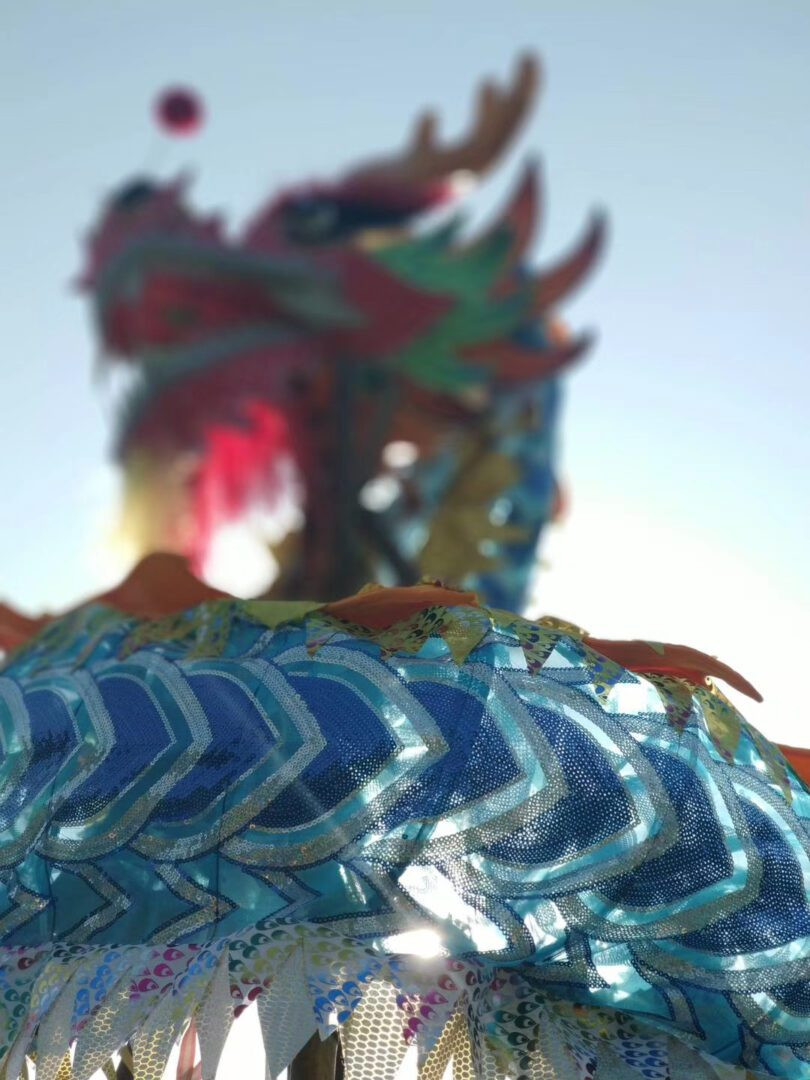 Dragon dance performance in Chinatown during Lunar New Year celebrations
Dragon dance performance in Chinatown during Lunar New Year celebrations
In Chinese folklore, dragons are revered as benevolent, powerful creatures dwelling in water and commanding rainfall. Dragon Dancing, with roots tracing back to the Han Dynasty (206 BCE–220 CE), originated as a ritual for abundant harvests. Over centuries, it transformed into a cherished tradition performed to ward off malevolent spirits and beckon good fortune. This rich history underscores the cultural significance of dragon dancing as more than just a performance; it’s a vibrant expression of hope and prosperity.
 Variety of dragon dance puppets showcasing different styles and sizes
Variety of dragon dance puppets showcasing different styles and sizes
From playful ten-foot puppets designed for children to colossal thousand-foot dragons requiring a large team to maneuver, the art of dragon dancing has evolved dramatically over two millennia. Across Asia, diverse styles have emerged, each movement bearing a poetic name, and each color imbued with special meaning. The construction materials are equally varied, ranging from humble woven straws and pasted paper to even wooden stools. However, the most iconic dragon puppets are skillfully crafted using bamboo strips, meticulously tied together and enveloped in vibrant cloth.
 Bamboo framework being constructed for a dragon dance puppet
Bamboo framework being constructed for a dragon dance puppet
The creation of these dragon puppets is a testament to skilled craftsmanship. Young bamboo shoots are split into delicate strips, then wired together to form the head, tail, and body sections. Experienced artisans dedicate themselves to constructing the head, particularly its articulated jaw, striving to capture the mythical beast’s majestic spirit. The tail and body sections are crafted with perfect symmetry, ensuring balance on the control poles. Fabric is then carefully sewn and glued to these bamboo skeletons, giving them form. Finally, embellishments like trimmings and furs are added, bestowing each dragon with a unique personality.
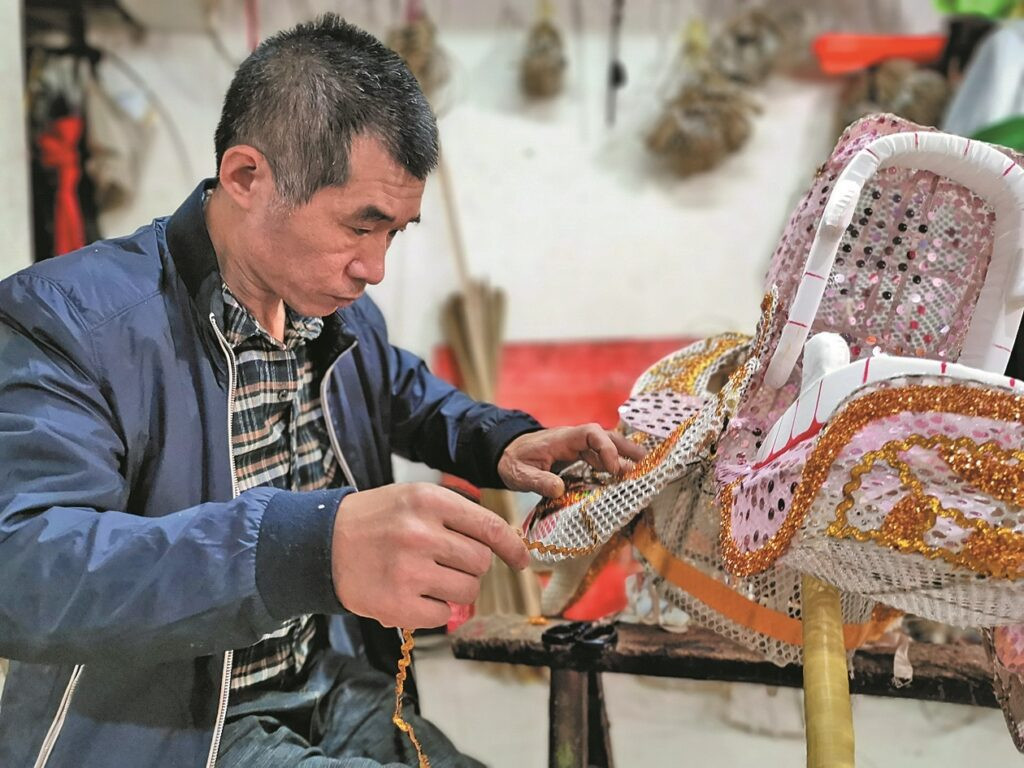 Fabric and decorative embellishments being added to a dragon dance puppet
Fabric and decorative embellishments being added to a dragon dance puppet
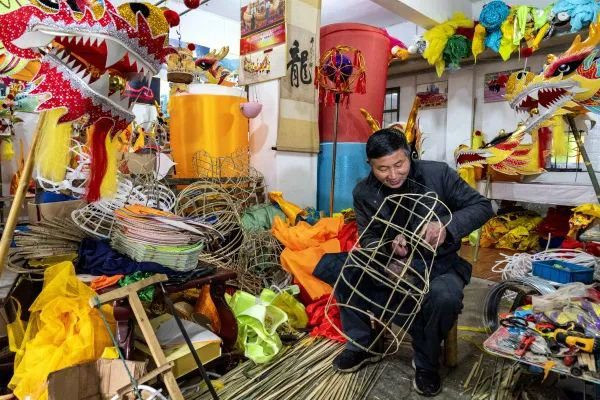 Artist meticulously crafting the head of a dragon dance puppet
Artist meticulously crafting the head of a dragon dance puppet
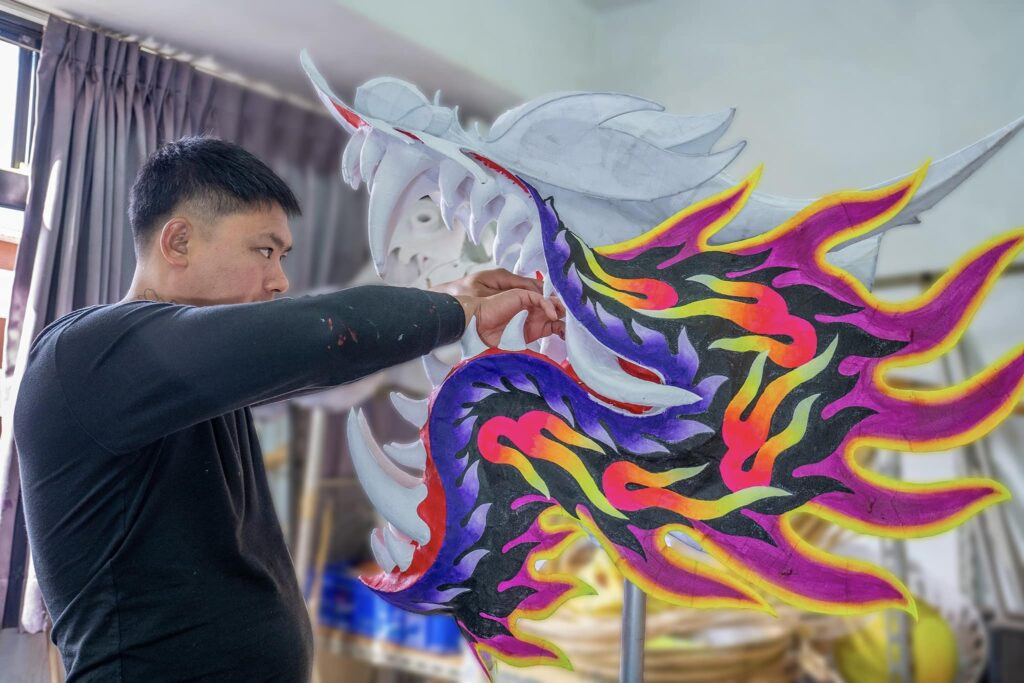 Modern dragon dance puppet featuring luminous fabric for spectacular night performances
Modern dragon dance puppet featuring luminous fabric for spectacular night performances
The craftsmanship of dragon dancing puppets has rapidly advanced in the last century. Traditional hand-painted scales on fabric have largely been replaced by digital printing, streamlining the intricate process. Modern innovations even include luminous fabrics that glow under blacklight and plastic frames instead of bamboo, reducing the weight for dancers. These advancements have transformed the traditional dance into a truly spectacular contemporary performance, captivating audiences worldwide.
 Digital printing technology used for creating intricate dragon scales on dragon dance puppet fabric
Digital printing technology used for creating intricate dragon scales on dragon dance puppet fabric
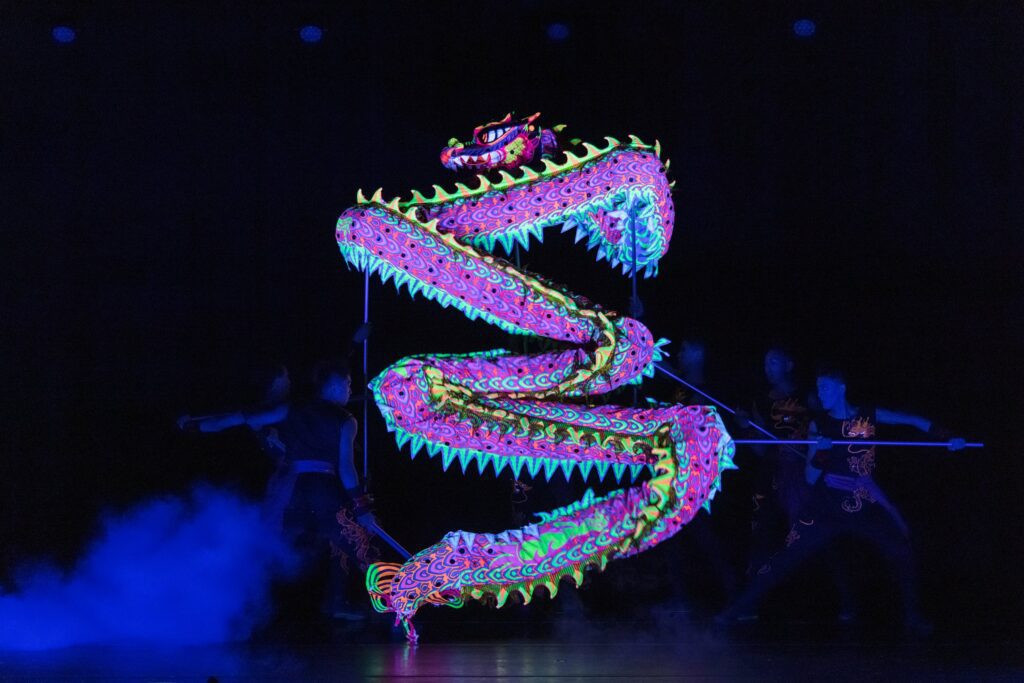 Dynamic movements of a dragon dance performance with dancers holding the puppet
Dynamic movements of a dragon dance performance with dancers holding the puppet
Dedicated artists remain committed to preserving the tradition, diligently passing their skills to future generations. Many are also passionate performers, coaching dance teams and continually refining their craft. One artist proudly declared that their work isn’t complete until they’ve taught customers how to animate the dragon, ensuring the crowd roars with excitement for the New Year’s arrival. This dedication ensures that the vibrant tradition of dragon dancing continues to thrive.
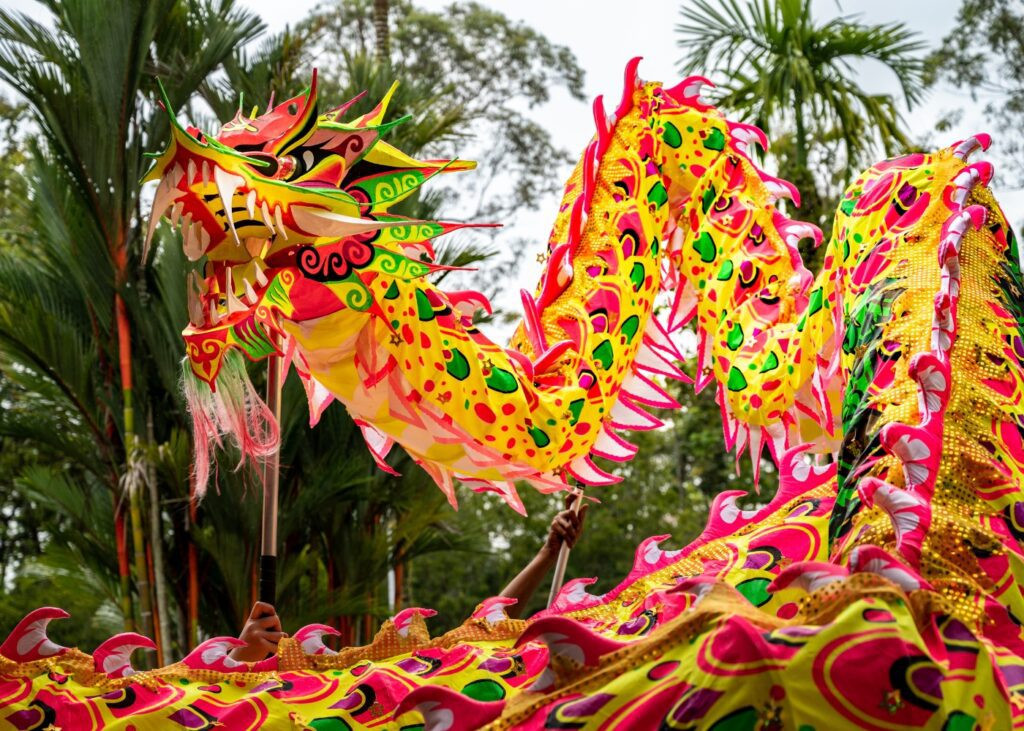 Group of dragon dance artists proudly displaying their handcrafted dragon puppets
Group of dragon dance artists proudly displaying their handcrafted dragon puppets
REFERENCES
Cai, Zongxin. “舞龍之淵源與發展.” 台灣傳統雜技藝術研討會, edited by Tengda Wu, Teachers College National Taitung University, Mar 1999, p. 69-90.
Lee, Meiyu. “Dragon Dance.” National Library Board: Singapore, Jan, 2016, www.nlb.gov.sg.
Long, Dechun and Xie, Feng. “非遗点亮生活 铜梁龙灯彩扎见功夫.” Chongqing Broadcasting Group, Nov. 2021, www.cbg.cn.
Lu, Shaojun. Research on the Dragon Dance Custom. Science Press, 2020.
Wang, Jinqiang. “奉化飞出一条龙.” People’s Daily Overseas Edition, June 2018, www.paper.people.com.cn.
龙飞“奉”舞: 国家非遗奉化布龙数字文创生态坊. www.sportsichlab.org.

